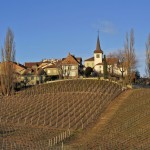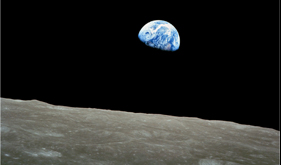Great Photographs No. 6
Das Baumchen – Albert Renger Patzsch
This is a photograph with which I have some difficulty.
Das Bäumchen, by Albert Renger-Patzsch, is considered by many to be one of the world’s great photographs. Some class it as being amongst the top 100 of all time. According to these experts, it ranks with ‘Migrant Mother’ and ‘Earthrise’.
And it’s not just experts’ opinion. Or maybe it’s because of the experts’ opinion, collectors go into a feeding frenzy when it comes on the market. Prints of Das Bäumchen sell for eye-watering sums. Here’s an extract from an auctioneer’s report in 2007:
Albert Renger-Patzsch’s “Das Bäumchen, 1929”, but printed in the 1950s, was bid up by a multitude of phones. After the phone banks quieted down, lot 82, which had been estimated at $6,000-8,000, sold to one of those phone bidders for $60,000.
Sixty thousand dollars? Ten times the estimated price? For this photograph? Why?
I am mystified by this. To me the image is bland to the point of boredom. And, coupled with the uninspiring scene is uninspiring composition.
In an effort to understand and maybe get some insight, I have read through various expert commentaries. Here is an extract from one:
… there is a palpable stillness about the picture, a sense of the artist’s quiet, patient and quasi-spiritual observation of an insignificant yet transcendental moment in time. The photographer has knowingly invited the eye of the spectator to roam over a landscape that is in no way distinguished. On the contrary, he would seem wilfully to have selected an undramatic, relatively flat and featureless terrain …
… and more …
… the picture is one of considerable, if understated, beauty and subtlety. The white highlight that runs down the black line of the trunk is just one – surely the most graphic – of the ways in which the sunlight gently caresses and animates this landscape. The irregular, yet perfectly balanced symmetry – like that of a leaf one might say – can be read as a metaphor for the order that is to be found in the natural world …
Maybe. But I still can’t see it.
The sapling cuts the picture almost exactly in half vertically. And we can’t see its upper branches at all. There is a line of rather dirty melting snow in the foreground, and the background is featureless rolling countryside – the sort of countryside you can see anywhere. Drab and uninspiring. There appear to be two more banks of melting snow in the distance, one of them bisecting the trunk. Apart from that, there is nothing of any interest. At least the horizon doesn’t cut the picture exactly in half … not quite … but that’s about the only thing that can be said for it. It’s nothing more than a slightly undulating line. The sky is empty.
In my opinion Renger-Patzsch took much better photographs. Here’s one with the same subject matter …
Personally, I wouldn’t class this as a ‘great’ photograph, either. But it seems to me to be a significantly better image. It’s far more evocative, full of mystery, strange, slightly eerie and graphically strong too.
So why is Das Bäumchen regarded as being so great? In what way is it better than Buchenwald im November? Why is a collector prepared to pay $60’000 dollars for a print that was made nearly 30 years later?
I think that if I’d taken a photograph like it I would have considered it a mistake and thrown it away.
Can someone explain?
Return to Great Photographs page












I recall an anecdote in which art critics became enamored with the work of a new painter, only to learn later that the artist was in fact a chimpanzee.
I wonder if this photo isn’t something like that? Perhaps Renger-Patzsch was playing a practical joke on the art world by creating this image, and the joke has subsequently gotten out-of-hand? If I had created this photo, I would also have considered it a mistake. I would certainly never have let anyone see the negative, let alone printed it.
Thanks Mike. Interesting anecdote. I know that art, in all its forms (including photography), has to be constantly experimental, going off in all different directions. Otherwise it just becomes the static, boring same-old-stuff. But many of those directions won’t work. It’s a sort of process of natural selection. Maybe that’s what he was trying here. As the previous poster observed … there are quite a few of his other photos which are way, way better.
I agree with you that it’s questionable why this picture is rated amongst the best photos of the world. I see -some- interesting graphic elements: the shadow repeats the far-right branch so that a parallelogram is formed; the fan-shaped branches -somewhat- support the frame, which gives an interesting effect. However the motive is boring and I cannot guess what the photographer wants to express with this picture.
I also know much better photographs of Renger-Patzsch.